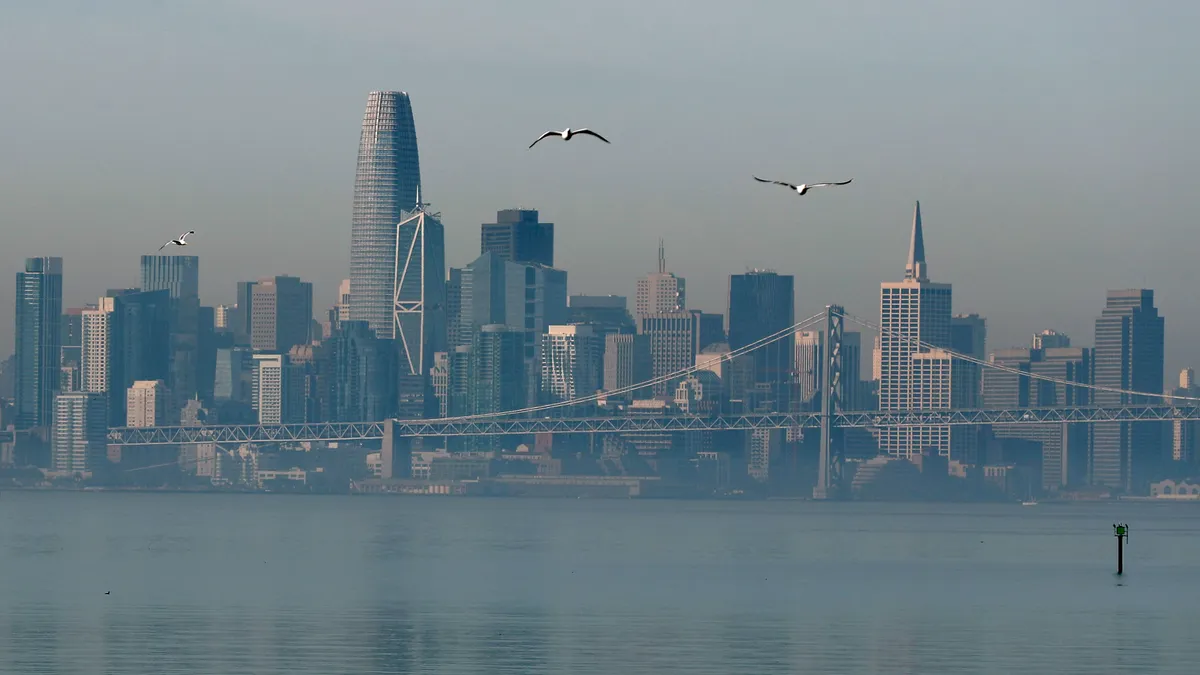Dive Brief:
- San Francisco, New York City, Boston and Los Angeles are among the most expensive cities to build in the world, according to Turner & Townsend's 2021 international construction market survey.
- More than 30% of the survey's respondents pegged a one- to two-year recovery for the construction industry to return to its pre-pandemic level of output.
- Rising costs of construction, supply chain disruption and skilled labor shortages remain the biggest barriers to industry growth, the study found.
Dive Insight:
Tokyo ranks as the most expensive city to build in the world, driven by the extensive pipeline of real estate and infrastructure projects pushing up demand for construction resources, according to the report. Following Tokyo are Hong Kong, San Francisco and New York. Boston and Los Angeles rank seventh and ninth, respectively, as both of these markets generally have high labor costs for construction.
North America has the highest average in construction wages, with New York and San Francisco's average hourly wage at $109.90 and $104.90, respectively, according to the survey.
The Turner & Townsend findings were similar to a recent Arcadis construction cost index, which ranked New York City and San Francisco as the seventh and eighth cities with the highest construction costs globally. Arcadis compiled the report during the second wave of the COVID-19 pandemic. No other U.S. cities ranked within the top 10, according to Arcadis.
Here is the full list of the top 10 most expensive cities to build, according to Turner and Townsend:
-
Tokyo
-
Hong Kong
-
San Francisco
-
New York City
-
Geneva
-
Zurich
-
Boston
-
London
-
Los Angeles
-
Macau
International border closures due to the pandemic mean imported labor has not been available or has been significantly reduced. That has had a negative impact on construction markets that depend on migrant workers, the study said.
More than a third of the respondents to the Turner & Townsend survey said the pandemic has had a high or significant impact on their supply chains. Structural steel beams, rebar, softwood timber and copper pipe prices have all risen sharply, with an increase of up to 40% year over year in some markets, according to the report.

Warm, lukewarm and even cold markets experienced higher price inflation because of the pandemic, partly due to the skilled labor shortages and supply constraints, according to the report. Higher price inflation usually occurs in hot markets.
But even as activity increases in sectors like multifamily, these supply chain constraints and skilled labor shortages are becoming more of an issue across the board, resulting in substantial construction cost inflation in many markets, according to the report. For this reason, economic recovery remains highly uneven between countries, regions and industries.
The global economy decreased by 3.5% in 2020, according to the International Monetary Fund. Yet, certain construction markets have seen an increase in activity so far in 2021.
The IMF forecasts 6% growth in the global economy in 2021, led by India, China and the U.S., increasing by 12.5%, 8.4% and 6.4% respectively.












